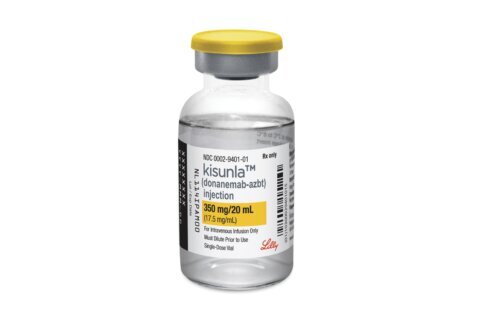You’re not imagining it: Summers really are getting hotter.
In fact, 2023 was the planet’s warmest year on record, according to the National Oceanic and Atmospheric Administration’s National Centers for Environmental Information. What’s more, the 10 warmest years on record have all occurred in the past decade.
That’s not just an uncomfortable fact — extreme heat can have real health consequences. Heat-related illnesses include heat rash, heat cramps, heat exhaustion and heat stroke.
In extreme cases, it can even lead to death. An analysis of Centers for Disease Control and Prevention data conducted by the Associated Press found that more than 2,000 people died from the effects of excessive heat in 2023.
Risk Factors for Heat Illnesses
Not everyone is bothered by heat in the same way. Risk factors that can contribute to experiencing heat illness include:
Medical conditions and medication use
People with high blood pressure, heart disease, diabetes, obesity and other chronic conditions are more likely to experience heat illness. The use of certain medications, such as diuretics, to treat these conditions can also elevate risk, the CDC reports.
Age
Susceptibility to heat illness increases with age; those over age 65 are at higher risk of having difficulty handling extreme temperature because the body loses some of its ability to regulate temperature over time, the CDC notes.
Occupation
Those who work outdoors, such as firefighters and postal workers, or those who work in hot kitchens, warehouses and other places with heat sources or a lack of air conditioning are more likely to suffer heat illness.
Location
While heat waves can spike the mercury anywhere in the country, people living in the South and Southwest are more likely to see consistently high temperatures in the summer that can contribute to heat illness and death.
For example, in 2023, at least 645 of the 2,300 people who died of excessive heat lived in Maricopa County, Arizona, according to AP. The entire state of Arizona accounted for nearly 38% of the national death toll, with 875 residents dying from heat illness. Emergency rooms in New Mexico, Texas, Oklahoma, Louisiana and Arkansas also saw much higher rates of heat illness in 2023 than they had over the previous five years.
Weather
When the temperature creeps above 90 degrees Fahrenheit, you should be cautious about outdoor exercise. But temperature doesn’t tell the whole story.
“High humidity levels can impede your body’s ability to cool itself through sweat,” says Dr. Myra Trivellas, an orthopedic surgeon and sports medicine specialist with Hoag Orthopedic Institute in Southern California. “If the heat index (a combination of temperature and humidity) is over 100 degrees Fahrenheit, it’s best to limit or avoid outdoor activities.”
Other factors
Other factors that can elevate the risk of heat-related illnesses include:
— What you’re wearing
— Alcohol consumption over the previous 24 hours
— Prior heat illness
[Read: How to Protect Your Heart in the Heat.]
Tips for Working Out Safely in the Heat
While the scorching temperatures might deter you from exercising regularly, you can make it safer by following these six tips and suggestions:
— Stay hydrated
— Get acclimated
— Carefully select your exercise time, type and venue
— Dress appropriately
— Pay attention
— Have a cooling strategy
[SEE: 8 Ways to Stay Hydrated Besides Drinking Water.]
1. Stay Hydrated
One of the best ways to avoid heat illness is staying hydrated. Your body needs plenty of fluids to maintain a cool temperature — which it does by increasing sweat output.
“Drink plenty of water before, during and after your workout,” Trivellas advises. “Dehydration can quickly lead to heat exhaustion or heat stroke.”
2. Get Acclimated
Your body can adapt to higher temperatures, but there may be an adjustment period.
“Start with shorter workouts, and gradually increase the duration and intensity as your body adapts,” Trivellas says.
This acclimation period can look different for each person.
“For example, a person who is acclimatized to whether in the Northeast will have a much lower threshold for heat illness as opposed to someone who is used to exercising in the humid heat of Florida,” says Dr. George E. Eldayrie, a primary care sports medicine physician with Orlando Health Jewett Orthopedic Institute and team physician for the Orlando City and Orlando Pride soccer teams in Florida.
To account for this, sports medicine practitioners use a temperature calculation called the WetBulb Globe Temperature, or WBGT, to determine whether it’s safe to exercise in the heat. The WBGT, which measures temperature in Fahrenheit, accounts for ambient heat of the sun, humidity, wind and other data to provide an overall temperature that you may be feeling in a certain climate.
“The higher the WBGT number, the shorter time for exercise in the sun is recommended,” Eldayrie says. “Typically, at levels greater than 90, exercise outdoors in the sun is discouraged or at most for a very short amount of time.”
[See: 12 Signs You Should Stop Exercising Immediately.]
3. Carefully Select Your Exercise Time, Type and Venue
In the summer, consider where, when and how you’ll get your workout. Some strategies include:
Exercise indoors
If you have a gym membership, a hot day is a good time to visit the treadmill or elliptical machine in an air-conditioned building. If you have air conditioning at home, a video or online workout can also offer a good alternative to pounding the pavement under a hot sun, says Dr. Alexandra Roche, a pediatrician with the Children’s Hospital of Orange County (CHOC) Primary Care Network in California.
Opt for water-based exercises
Swimming and water aerobics, for instance, have low impact on joints, and they offer a full-body workout. More importantly, the water offers a cooling effect, which can help you regulate your body temperature, preventing overheating and keeping your workout more comfortable, Trivellas notes.
Make sure you’re taking safety precautions: Don’t swim alone, even if you’re an adult or an experienced swimmer, and wear sun protection near the water, which can reflect the sun’s UV rays and cause sunburn more quickly, Roche says. You should also stay hydrated, especially if you’re prone to sunburns, which can cause dehydration faster, Eldayrie adds.
Exercise when it’s cooler outside
Schedule your workouts for early in the morning or later in the evening when temperatures dip can help make outdoor activities — like running, cycling or outdoor yoga — more enjoyable and safer during these times.
Take breaks
Be sure to take breaks on extra-hot days. Some folks can get so wrapped up in the workout, they don’t realize how hot they’re getting.
Modifying your workouts and reducing your intensity levels allows your body a chance to cool down and recover.
4. Dress Appropriately
“When exercising, wear loose-fitting clothing made of light-colored and breathable or moisture-wicking fabrics,” Roche says. “This keeps you comfortable and dry — and can protect against sun overexposure.”
You still need sunscreen to help protect your skin from overexposure to ultraviolet radiation. If you’re sweating heavily, you’ll need to reapply sunblock more often to maintain adequate coverage.
5. Pay Attention
While you’re working out on a hot day, it’s important to check in with yourself from time to time to make sure you’re still feeling OK. Heat exhaustion can come on quickly, so pay attention to warning signs, which may include:
— Dizziness or fainting
— Headache
— Muscle cramps or weakness
— Nausea and/or vomiting
— Irritability
— Heavy sweating
— Cool, clammy skin
“If you experience any of these, stop exercising and cool down immediately,” Trivellas says.
Heat exhaustion can quickly proceed into heat stroke, “which is a much more serious, life-threatening medical emergency,” Roches adds.
6. Have a Cooling Strategy
Prepare for a hot workout by having a spray bottle to mist yourself and keeping cold water, ice packs and cooling towels at the ready. Know what you’ll do if you get too hot. Look for:
— Cold water. Immersing your body in cold water can help bring your temperature down quickly. Drinking cold water is also an effective strategy that helps reduce your temperature from the inside.
— Cold towels or ice packs. Trivellas suggests placing them on your neck, wrists and forehead.
— Fans. Cooling down with fans during a workout can help release some of your body’s heat by helping sweat evaporate.
The Bottom Line
Preparation and flexibility with your workout schedule are key.
“Always check the weather before you exercise to ensure that the environment you are about to exert yourself in will be safe for exercise,” Eldayrie advises.
He also encourages people with a history of heat illness or heat strokes to consult a sports medicine physician before starting an exercise plan in the heat because recurrence is possible.
More from U.S. News
Mind-Blowing Benefits of Exercise: Why Exercise Is Important
Exercises Trainers Would Never Do
A Guide to Exercise After Surgery
Best Summer Workouts: How to Stay Safe in the Heat originally appeared on usnews.com







